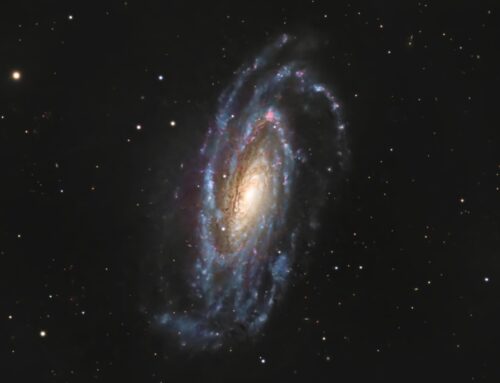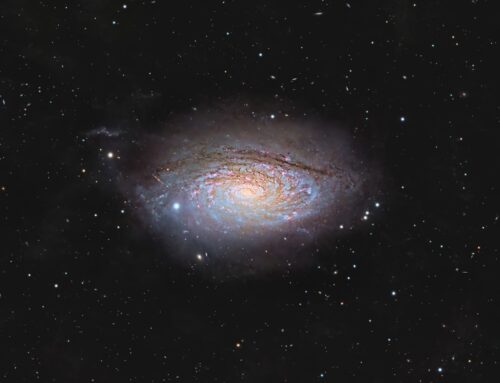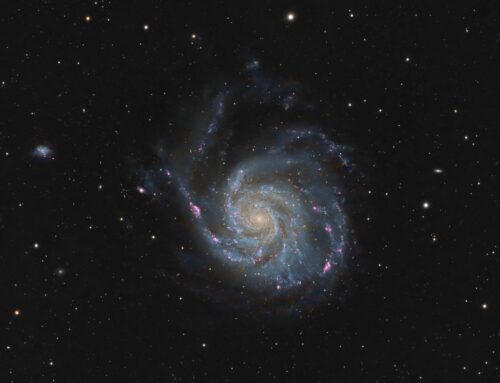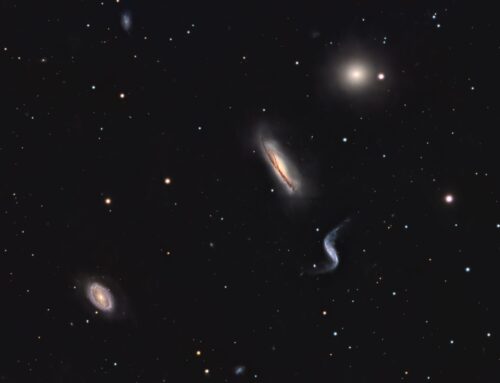M63, The Sunflower Galaxy
Click image for full size version
May 20, 2013
Looking at the mottling in the spirals of this galaxy it’s easy to see why it’s known as the Sunflower Galaxy (also known as M63 – the 63rd entry in the Messier catalogue). There are a lot of red emission nebulae in this galaxy; these are structures similar to our own galaxy’s Orion Nebula. I used a special filter to capture the light from these nebulae (H-alpha filter). In spite of its vast distance (37 million light years), it covers more than 1/3 of the moons width — speaking to its immense size. It is gravitationally associated with the Whirlpool Galaxy (M51), which I have imaged before. It took me nearly 3 months to get the data for this shot, again due to the poor weather we’ve had. Of course, now the moon is prominent in the sky so I won’t be imaging any more galaxies for the next week or two. I have a nice shot of some Virgo Cluster galaxies that I am working on now…
Tekkies:
SBIG STL-11000M camera, Baader LRGB and Ha filters, 10″ f/6.8 ASA astrograph, MI-250 mount. Guided with STL-11000’s external guider and 400 mm f.l. guide scope. Acquistion, guiding, calibration, registration and integration all done using Maxim-DL. All other processing in PixInsight. Shot from my SkyShed in Guelph, Ontario. No moon for luminance. Some moonlight for R,G, B. Full moon for Ha. Average or better transparency and average seeing.
17x10mL,12x5m R, 12x5m G, 15x5m B and 11x20m Ha. Luminance was shot unbind. Total exposure time 9hr 45m. R,G, B and Ha were shot binned 2×2.
The R, G and B files produced in MaximDL were registered and combined into an RGB image in in PixInsight followed by DynamicBackgroundExtraction, colour calibration, histogram stretch, and saturation. Similar processing was applied to the Ha master, which was then aligned to the RGB frame and combined using the HaRGB Combine script in PixInsight. The HaRGB image was stretched and processed slightly further to reduce noise and adjust colour balance and saturation.
The luminance frame was then processed using Dynamic Background Extraction, deconvolution, histogram stretch, HDR Multiscale Transform, Local Histogram Equalization and TGV Denoise. The L and HaRGB images were registered and the L applied to the HaRGB using LRGBCombine toolSlight tweak of saturation and curves. Image scale is about 1.1 arc sec per pixel.
This was the first time I have used the new PixInsight TGV denoise command. I found it quite easy to use (you have to experiment) and it worked well. For those of you interested in how it compares to other PixInsight noise reduction tools, see
http://pixinsight.com/forum/index.php?topic=5615.msg38452#msg38452







Leave A Comment